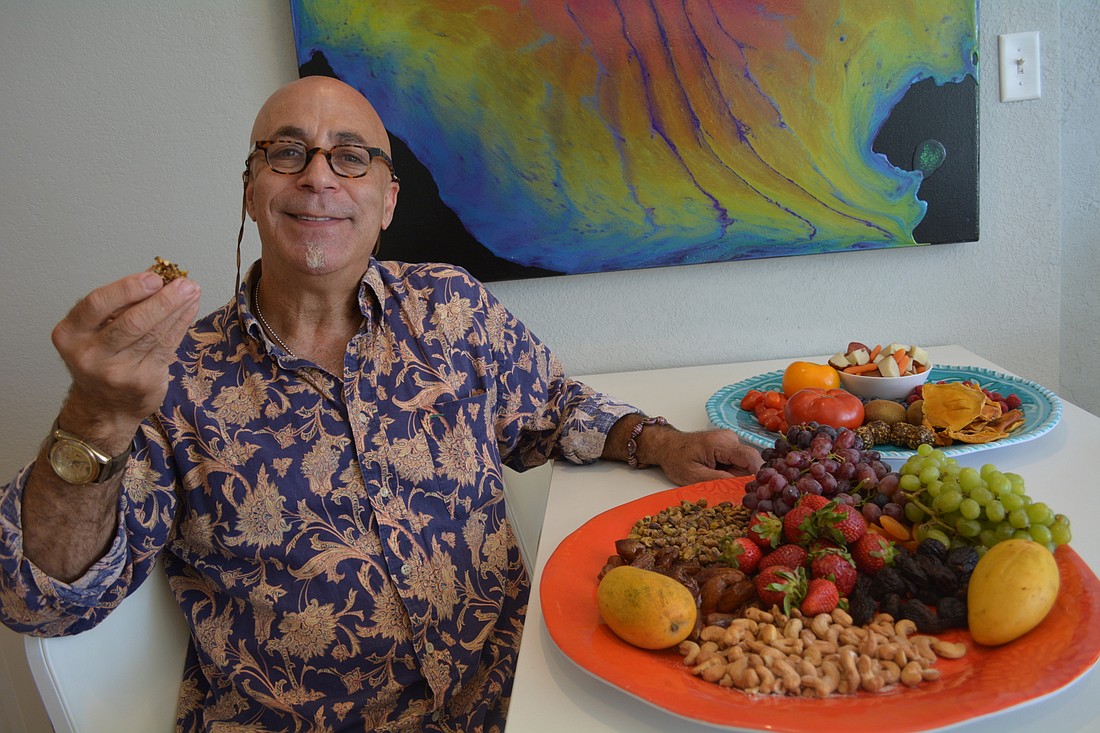- May 6, 2024
-
-
Loading

Loading

When Craig Chasky lived in a 200-year-old farmhouse in Massachusetts in 1989, he was a budding chef who had recently opened his own restaurant.
But mowing the grass on his property one day changed his outlook on life and food.
Over the next nine months, his back and spine began to ache, his vision went in and out and he dropped from 140 to 95 pounds without any apparent explanation. He was easy to anger.
It was more than a year before doctors diagnosed him with Lyme disease, a virus typically contracted through tick bites.
“It stays with you forever,” Chasky, 63, said of the virus. “You have to fortify your body by adding as much optimal health as possible.”
For that reason, the Sarasota chef now eats a Mediterranean diet — one that is primarily plant-based and is rich in nuts, fresh berries, leafy greens and olive oil. He avoids processed sugars and table salt, although he uses sea salt in moderation because of its nutritional value.
He adds lemon, a staple ingredient in some Mediterranean countries, to his water for its nutritional benefits.
“It’s very digestible, and it has tremendous plant-based nutrients,” Chasky said of the Mediterranean diet.
A typical day is a breakfast of whole-grain cereal with nuts and berries, a lunch of fresh fruit and dinner of a leafy, green-filled salad. Sometimes, Chasky eats a little fish or chicken.
Portions typically are in 4-ounce increments — a handful.
The Mediterranean diet generally dissuades consumption of red meat or processed sugar but encourages consumption of fish and high-quality monounsaturated fats, such as olive oil. Intake of dairy is fairly minimal.
Much of the diet also surrounds a lifestyle that emphasizes activity and socializing. Following his diagnosis, Chasky met a physician who taught him why eating slowly is important.
“I learned about digestion and slowing down to eat and letting enzymes break down my food, instead of so much of it breaking down in my stomach,” Chasky said. “It’s all about balance.”
He started eating smaller meals more often. He also learned the value of essential oils and plant-based nutrients.
At the time of Chasky’s Lyme disease diagnosis, there weren’t treatment options available. He loaded up on the antibiotics doctors hoped would improve his health only to find himself unhealthier than before.
“It was like being a guinea pig,” he said. “No matter how I ate, I wasn’t getting the nutrients I needed.”
He educated himself about the disease and nutrition and realized the medications had killed off his intestinal flora and his body was not absorbing nutrients the way it should. By changing his diet, his health returned, and Chasky has avoided many of the aches and pains accompanied by age.
He also has avoided heart disease, which runs in his family. His father, Sidney Chasky, died at 43 from a heart attack.
“I don’t want to go backward in life,” Chasky said of why he continues eating the Mediterranean way. “I’ve already gotten a second chance.”
Ingredients
1 clove garlic
1 (19 ounce) can garbanzo beans, half the liquid reserved
4 tablespoons lemon juice
2 tablespoons tahini
1 clove garlic, chopped
1 teaspoon salt black pepper to taste
2 tablespoons olive oil
Directions
Prep time, 15 minutes